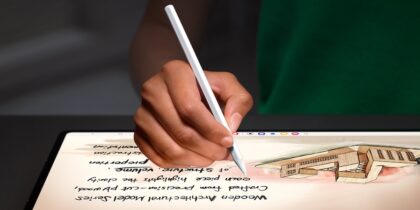Technology shapes the way we work. When I began my career over 35 years ago — even at a technology pioneer like HP — we were still well and truly operating in an analog age. Sales records were tallied by hand and orders relayed verbally from the field. There was no such thing as “mobile productivity.” Today, I consider myself an early adopter and preach the benefits of the latest mobile technology. But when I compare my use of smartphones and apps with the way my millennial children use their devices to achieve mobile productivity gains, there is no comparison. I hate to say it, but as much as I try, I’m no digital native.
Recently Samsung partnered with the growth-consulting firm Frost & Sullivan to survey 500 IT and line-of-business managers and executives in the U.S. on their use of smartphones and tablets in the enterprise. The eye-opening data shows the significant benefits of encouraging and supporting employees’ use of mobile devices in the workplace, including a reported 34 percent gain in productivity overall.
The Way We Work Has Changed—For Better
Read our white paper to find out how smartphone productivity has changed the way work gets done. Download Now
Generational Differences
As part of the study, we also thought it would be interesting to look at whether there are any clear differences in behavior and attitudes between millennials in the workforce and previous generations.
Keep in mind, millennials, who are most commonly defined as “age 18-34 by 2015,” will comprise as much as 75 percent of the workforce by 2030. So they’re clearly having an impact on the way business gets done — and given their sheer numbers (bigger than the baby boomer generation), they’ll continue to do so for decades to come. The generational differences revealed in our study with Frost & Sullivan are dramatic — millennials are clearly driving the biggest gains in work and personal efficiency. Here’s a look at what they’re doing with smartphones and tablets at work right now:
-
Millennials are much more engaged with their mobile devices: 67 percent report using them “usually” or “always,” compared with only 51 percent of Gen Xers and baby boomers. Anyone who has spent much time with millennials knows they always have their smartphones in hand, and the survey confirms it. However, they’re less likely to use “old-school” apps like email, and are instead more ready to use video conferencing (51 percent versus 39 percent), audio conferencing (45 percent versus 30 percent) and web conferencing (38 percent versus 33 percent) than their older coworkers.
-
Millennials consistently say they see greater productivity gains from smartphone usage, especially around innovation, collaboration, and the quality and accuracy of their work. They report gaining an average of 63 minutes of work time and 69 minutes of personal time; around 20 percent and 40 percent more, respectively, than their older colleagues. As a result, they also report being much more efficient, and 81 percent attribute those results directly to their smartphone use. Given these mobile productivity gains, perhaps we can all learn something from the way millennials use their smartphones.
Device Availability a Key Factor in Usage and Security
But there is another data point in this study that concerns me — the finding that millennials are much less likely than their older counterparts to receive the technology they say will make them more productive. In fact, only 22 percent of millennials say that their employers provides them with smartphones (compared with 31 percent of their older colleagues). By comparison, 58 percent get desktop PCs (compared with 67 percent of older workers) and 39 percent get corporate-issued laptops (versus 47 percent).
That said, the fact that they don’t receive mobile tools from their employers isn’t keeping millennials from using them — indeed, they’re more likely to use smartphones, laptops and even desktop PCs than their older colleagues. They’re just supplying the devices themselves. They’re more apt to use smartphones (80 percent versus 74 percent) and tablets (69 percent versus 63 percent) to support business and productivity apps, and interestingly, they’re also much more likely to use custom-built apps than their older coworkers (46 percent versus 34 percent). But, as we know, while BYOD is better than no device at all, there are significant trade-offs in terms of security and management.
It’s clear to me that companies should be working to take advantage of these productivity gains by providing their millennial employees with the tools and technologies they need — especially smartphones and mobile apps — that will enable them to continue to drive productivity improvements. It’s also clear that we may actually have a few things to learn from our millennial employees on how to get things done.
For a more detailed rundown of the Frost & Sullivan smartphone productivity survey findings, click here.









